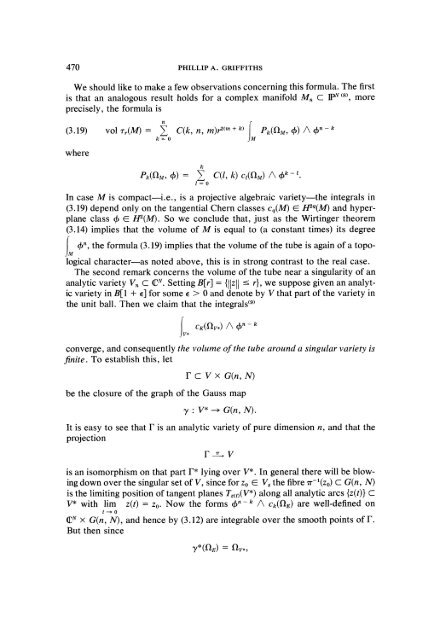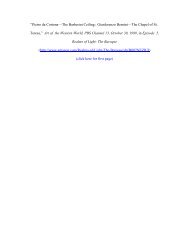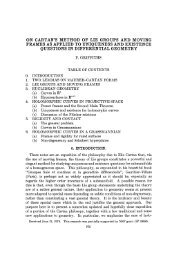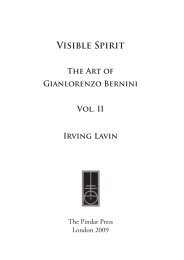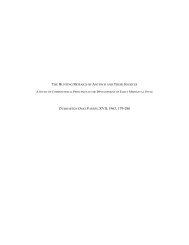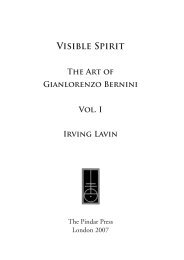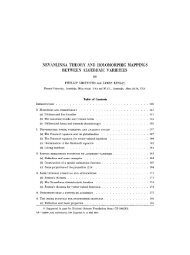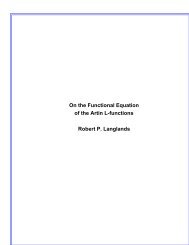View PDF - Project Euclid
View PDF - Project Euclid
View PDF - Project Euclid
You also want an ePaper? Increase the reach of your titles
YUMPU automatically turns print PDFs into web optimized ePapers that Google loves.
470 PHILLIP A. GRIFFITHS<br />
We should like to make a few observations concerning this formula. The first<br />
is that an analogous result holds for a complex manifold Mn C IP u (8), more<br />
precisely, the formula is<br />
(3.19) vol rdM)<br />
where<br />
/=0<br />
I 2(m C(k, n, m)r + ) P(ft, 6)/ 6"-<br />
Pk(12M, 6) C(1, k) C,(M) /k dp- t.<br />
/=0<br />
In case M is compactmi.e., is a projective algebraic varietymthe integrals in<br />
(3.19) depend only on the tangential Chern classes cq(M) Hq(M) and hyperplane<br />
class H(M). So we conclude that, just as the Wirtinger theorem<br />
(3.14) implies that the volume of M is equal to (a constant times) its degree<br />
", the formula (3.19) implies that the volume of the tube is again of a topo-<br />
M<br />
logical character--as noted above, this is in strong contrast to the real case.<br />
The second remark concerns the volume of the tube near a singularity of an<br />
analytic variety V, C ([N. Setting B[r] {[Izl] 0 and denote by V that part of the variety in<br />
the unit ball. Then we claim that the integrals 9<br />
V<br />
CK(-V*) / +n- tc<br />
converge, and consequently the volume of the tube around a singular variety is<br />
finite. To establish this, let<br />
FCV G(n,N)<br />
--<br />
be the closure of the graph of the Gauss map<br />
7 V* G(n, N).<br />
It is easy to see that F is an analytic variety of pure dimension n, and that the<br />
projection<br />
is an isomorphism on that part F* lying over V*. In general there will be blowing<br />
down over the singular set of V, since for z0 V the fibre 7r-l(z0) C G(n, N)<br />
is the limiting position of tangent planes Tzt)(V*) along all analytic arcs {z(t)} C<br />
V* with lim z(t) zo. Now the forms b"- / c(O) are well-defined on<br />
t--0<br />
U X G(n, N), and hence by (3.12) are integrable over the smooth points of F.<br />
But then since


